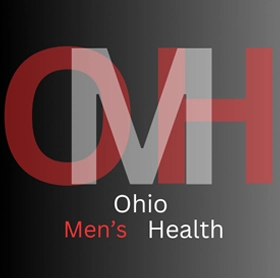Testosterone Replacement Therapy in Columbus OH

Why is Testosterone Replacement Therapy in Columbus OH important for men with low testosterone levels? For men, testosterone is an essential anabolic and androgenic hormone that affects a wide range of physiological functions. Low testosterone levels can lead to various health issues, such as decreased muscle mass and strength (muscle loss), increased body fat (weight gain), diminished energy levels, reduced sex drive, and even cognitive function decline.
TRT is crucial because it addresses these symptoms by replenishing testosterone, thereby potentially improving quality of life. Beyond alleviating physical issues, such as muscle loss and erectile dysfunction, it can also impact psychological well-being, helping to improve mood and cognitive function. This makes TRT an important consideration for men grappling with hormone imbalances that affect their day-to-day lives.
Benefits of Testosterone Replacement Therapy in Columbus OH
TRT has been associated with a myriad of benefits for those with clinically low levels of testosterone. Some of the potential benefits include:
- Enhanced muscle mass and lean muscle development which can also support joint pain reduction.
- Improvement in energy levels and reduction in feelings of fatigue, thus delivering a better overall quality of life.
- Increased libido and improved sex life for those who have experienced a decline in sexual desire.
- Improvement in cognitive functions such as memory and focus.
- Positive effects on mood that could reduce instances of depression and anxiety linked to low testosterone.
- Management and reduction of weight gain through an increase in metabolism.
Using TRT to address testosterone deficiencies should always be approached under the guidance of qualified medical practitioners. Each person’s experience with TRT can vary, and what proves effective for one individual may not be the case for another. It’s essential that those considering TRT undergo a thorough evaluation to determine the best course of action.
Wonder if you have low T?
Get your hormone levels tested and find out.
Signs and Symptoms of Low Testosterone Levels
Low testosterone, a condition medically known as hypogonadism, can present through a variety of signs and symptoms that may affect a man’s physical, emotional, and mental well-being. Recognizing these symptoms is important to identify the need for further evaluation and potential treatment.
Common signs and symptoms of low testosterone in men
The manifestation of low testosterone levels can be diverse. Some of the most commonly reported symptoms include:
- Muscle Loss: A noticeable decrease in muscle mass and strength.
- Weight Gain: An uncharacteristic increase in body fat, particularly around the abdomen.
- Fatigue: Persistent feelings of exhaustion that are not alleviated with rest.
- Reduced Sex Drive: A decline in libido or sexual interest.
- Erectile Dysfunction: Difficulty in achieving or maintaining an erection.
- Cognitive Impairment: Challenges with memory, focus, and concentration.
- Mood Changes: Increased feelings of sadness, depression, or irritability.
- Hair Loss: A reduction in body hair, including facial hair.
- Bone Mass Reduction: An increased risk of osteoporosis or fractures.
How to know if you have low testosterone levels
Knowing whether you have low testosterone levels typically requires a combination of symptom evaluation and medical testing. Start by observing if you are experiencing any of the common symptoms listed. If these symptoms persist and affect your daily functioning, it is advisable to consult with a healthcare provider. They may recommend a blood test, usually performed in the morning when testosterone levels are highest, to measure your hormone levels accurately. A result showing testosterone levels below the normal range of 300–1,000 ng/dL can indicate hypogonadism.
The impact of low testosterone on quality of life
Low testosterone can significantly impair a man’s quality of life. Physical issues such as muscle weakness, weight gain, and diminished bone density can limit everyday activities and enjoyment of life. The psychological effects, including lack of motivation, low mood, and impaired cognitive abilities, can disrupt work performance and social interactions. Furthermore, sexual health problems like low libido and erectile dysfunction can strain intimate relationships. Low testosterone can lead to a less active, less fulfilling lifestyle.
By addressing low testosterone levels promptly through appropriate diagnosis and management, many of these effects can be mitigated, substantially improving a man’s overall well-being and quality of life.
Diagnosis and Hormone Testing
The diagnosis of low testosterone is a critical step on the path to restoring balance and well-being for men suffering from the symptoms associated with this condition. To accurately diagnose this hormonal imbalance, medical practitioners often conduct a comprehensive evaluation that begins with a detailed medical history, an assessment of symptoms, and a physical examination. The cornerstone of diagnosing low testosterone, however, is hormone testing through blood analysis.
How is low testosterone diagnosed?
Low testosterone, or male hypogonadism, is diagnosed by identifying the symptoms and then confirming the deficiency through lab tests. During an initial consultation, a healthcare provider will inquire about the patient’s symptoms, overall health, and medical history. A physical examination may also be performed to check for signs of testosterone deficiency, such as body hair loss or loss of muscle mass.
The diagnosis hinges on blood tests to measure hormone levels, including total testosterone. These tests are usually conducted in the morning, as testosterone levels tend to be higher and more stable at this time. If the blood test shows testosterone levels below the standard range of about 300-1,000 ng/dL, a man may be diagnosed with low testosterone.
Understanding hormone testing and its role in TRT
Hormone testing plays a pivotal role in testosterone replacement therapy (TRT). By providing a quantifiable measure of testosterone levels, hormone testing enables healthcare providers to make evidence-based decisions on whether TRT is necessary. The process involves collecting a blood sample to measure the amount of testosterone and, often, additional hormones such as luteinizing hormone (LH) and follicle-stimulating hormone (FSH), which can help determine if the issue is testicular (primary hypogonadism) or related to the pituitary gland (secondary hypogonadism).
Understanding the results of these tests is essential for tailoring TRT to the individual. Based on accurate hormone levels, dosages and treatment options can be adjusted.
Factors to consider when interpreting hormone test results
When interpreting the results of hormone tests, a number of factors must be taken into account to ensure an accurate diagnosis:
- Age: Testosterone levels naturally decline, so what is considered “normal” can vary depending on the patient’s age.
- Time of Day: Testosterone levels fluctuate throughout the day, so the blood test timing can affect results.
- Health Conditions: Chronic illnesses, obesity, and medications can influence testosterone levels.
- Lab Variations: There may be slight differences in measurements between labs, so it’s important to use the same lab for consistency when monitoring levels over time.
- Symptomatic Correlation: Results must be correlated with symptoms since some individuals may have low levels without experiencing any symptoms.
Proper analysis of these factors is critical in determining an accurate diagnosis and an effective treatment strategy. Hormone testing is not just about obtaining a number; it’s about interpreting that number within the broader context of an individual’s symptoms, lifestyle, and overall health.
By taking a comprehensive approach to testing and interpretation, healthcare providers can devise individualized treatment plans that aim to normalize hormone levels and ameliorate symptoms, ultimately enhancing patients’ quality of life.
Treatment Options for Testosterone Replacement Therapy
Discovering that you have low testosterone levels can be challenging, but a variety of treatment options for Testosterone Replacement Therapy (TRT) exist to restore healthy testosterone levels and help mitigate the symptoms of hormone imbalance such as muscle loss, decreased sex drive, and low energy levels. An experienced healthcare provider, including medical practitioners and nurse practitioners, will guide you through the options to find the most suitable one for you. Here are the main forms of TRT:
- Injections: Typically administered weekly, directly into the muscles.
- Patches: These are applied to the skin and release testosterone into the bloodstream.
- Gels: Applied daily to the skin on the upper arms, shoulders or abdomen.
- Pellets: Implanted under the skin, releasing testosterone over a period of months.
- Oral therapy: Recently available in specific forms that bypass the liver.
- Nasal gels: Applied within the nostrils for absorption through the nasal lining.
Each therapy has its considerations, and your choice might depend on convenience, cost, lifestyle, and preference after discussing with healthcare professionals during an initial consultation.
What are the different treatment options for TRT?
When selecting a testosterone replacement therapy, it’s essential to understand all the available options: When selecting a testosterone replacement therapy, it’s essential to understand all the available options: Different methods, such as injections, gels, patches, and implants, offer varying levels of convenience and effectiveness depending on individual needs. It’s crucial to consult with a healthcare provider to find the best fit and fully understand the risks and benefits. With testosterone replacement therapy explained thoroughly, patients can make informed decisions that align with their treatment goals and lifestyle preferences.
- Testosterone Injections
- Often the most cost-effective method.
- Required to be administered every one to three weeks depending on the type.
- Transdermal Patches
- Convenient, needing to be applied once daily.
- Can cause skin irritation or allergic reactions for some individuals.
- Topical Gels
- Easily applied, providing a steady hormone level.
- Risk of skin irritation and the possibility of transferring the hormone to others through skin contact.
- Pellets
- Provide a long-term solution, lasting three to six months.
- Involves a minor surgical procedure for implantation.
- Oral Therapy
- Pills are taken by mouth on a daily basis.
- Certain formulations avoid damaging the liver, a common concern with older forms.
- Nasal Gels
- Administered twice or thrice daily.
- Convenient without risk of skin-to-skin transfer; however, possible nasal irritation.
The pros and cons of hormone injections, patches, gels, and pellets
Each TRT option has its set of advantages and drawbacks:
Injections
- Pros: Cost-effective, infrequent dosing | Economical and infrequent dosing
- Cons: Requires needles, potential for peaks and troughs in hormone levels| Invasive and may cause fluctuations in testosterone levels.
Patches
- Pros: Steady hormone delivery, easy application | Convenient, continuous delivery
- Cons: Skin irritation, is visible on the skin | Skin reactions and must be worn constantly
Gels
- Pros: Steady levels, easily adjustable dose | User-friendly, stable dosing
- Cons: Risk of transferring to others may require daily application | Must dry before dressing. Risk of transference
Pellets
- Pros: Long-term hormone delivery, less frequent dosing | Long-term release only needs to be administered several times a year
- Cons: Minor surgical procedures required | Minor surgical procedure is required, and there is potential for pellet extrusion.
Choosing the right treatment approach for you
Deciding on the right TRT strategy involves careful consideration of several factors, and a healthcare provider can offer a comprehensive approach to ensure that the treatment aligns with your individual needs. Here’s a simple guide to assist in decision-making:
- Lifestyle Compatibility: Will daily applications or frequent office visits for injections fit into your routine?
- Cost Concerns: What can you afford in the long term?
- Health Considerations: Do you have any skin conditions that might be aggravated by patches or gels?
- Personal Comfort: Are you uncomfortable with needles? Do you have privacy concerns about visible patches?
It is crucial to discuss these considerations with your healthcare provider during the initial consultation. They can use details from your medical history to tailor the treatment to your profile, ensuring not just restored hormone levels but also a compatible solution for your life.
Remember, these treatments aim to improve your quality of life, energy levels, and cognitive function while tackling issues such as muscle mass decline and erectile dysfunction. With the right treatment, TRT can significantly enhance your well-being and overall health.
Working with Medical Practitioners
When seeking treatment for low testosterone levels, it is vital to partner with skilled medical practitioners. These professionals have specialized training in hormone therapy, including Testosterone Replacement Therapy (TRT), and they focus on how hormonal imbalances can affect physical health, mental state, and overall quality of life.
Experienced practitioners possess a deep understanding of the delicate nature of the endocrine system and are equipped to prescribe and manage TRT safely and effectively. They can navigate the complexities of determining the appropriate treatment for each individual based on their medical history, lifestyle, and specific symptoms like muscle loss, energy decline, and reduced sex drive.
What to expect during your initial consultation for TRT
The journey to optimal hormone health starts with an initial consultation for TRT. This first meeting allows you and your healthcare provider to establish a rapport and discuss the path ahead. Here’s what you can typically expect:
- Medical History Review: A detailed conversation about your past and current health conditions, medications, and any symptoms you are experiencing related to hormone imbalance.
- Physical Examination: A thorough physical check to identify any signs that may correlate with low testosterone levels.
- Blood Tests: These are crucial for pinpointing your exact hormone levels and are usually required for a definitive diagnosis.
- Discussion of Symptoms: Expect to discuss specific symptoms such as muscle loss, weight gain, joint pain, diminishment of sex drive, and cognitive changes.
- Treatment Options Overview: A run-through of various TRT methods, from weekly injections and gels to pellets and oral therapies.
- Cost and Lifestyle Considerations: An honest conversation about the financial aspects of TRT and how different treatments can fit into your lifestyle.
It is important to ask questions, express concerns, and clearly understand the next steps during the consultation. A reputable practitioner will encourage open communication and work with you to create a personalized treatment plan.
This comprehensive evaluation sets the stage for successful therapy and lays the groundwork for a supportive patient-practitioner relationship, ensuring that you embark on your TRT journey with confidence and clarity.
Benefits and Risks of Testosterone Replacement Therapy
Testosterone Replacement Therapy (TRT) has become a transformative treatment for many men experiencing the effects of low testosterone levels. As with any medical intervention, understanding the potential benefits and risks is crucial for those considering this form of hormone therapy.
The Potential Benefits of TRT on Muscle Mass, Energy Levels, and Sex Drive
The administration of TRT can have significant positive outcomes for men with low testosterone, enhancing both physical and psychological well-being.
Muscle Mass: TRT can lead to lean muscle development and reduce muscle loss, sometimes noticeable within a few months of treatment.
Energy Levels: Improved testosterone levels are often associated with a boost in overall energy and vitality.
Sex Drive: A revival in sex drive and improvement in erectile dysfunction can enhance one’s sex life and personal relationships.
While benefits can be substantial, they vary by individual and must be weighed against potential risks.
Important Considerations and Potential Risks of TRT
Before initializing TRT, medical practitioners typically perform a comprehensive review to minimize risks.
- Hormonal Imbalance: Mismanaged dosages can lead to hormone levels swinging too high, negating benefits, and causing side effects.
- Cardiovascular Health: There is debate over TRT’s influence on heart health; it is essential to monitor this closely, especially in patients with existing heart conditions.
- Prostate Health: Routine check-ups are necessary as there is concern about TRT’s long-term effects on the prostate, including a potential risk for existing prostate cancer to grow.
Long-term management and regular check-ins are key to mitigating these and other risks.
Pros and Cons of Long-Term Hormone Replacement Therapy
Long-term TRT requires ongoing commitment and comes with its set of pros and cons.
Pros:
- May sustain muscle mass and strength
- Can improve quality of life through better mood and vitality
- Enhances sexual function and libido over time
Cons:
- Requires regular monitoring to ensure hormone levels are safe
- Long-term dependency can make discontinuation challenging
- Potential for adverse effects if not managed by specialists
TRT can be life-changing but is not without its long-term considerations. It involves continuous care and communication between patient and healthcare provider to maximize benefits and reduce risks.
Combining TRT with a Comprehensive Approach to Health
Integrating a holistic health strategy is important for individuals on Testosterone Replacement Therapy (TRT) to capitalize on its full benefits. This comprehensive approach encompasses TRT and involves collaboration with medical practitioners to address lifestyle factors conducive to overall health optimization.
The Role of Diet and Exercise in Optimizing TRT Results
A thoughtfully curated diet and regular exercise regimen can significantly augment the effects of TRT. A balanced diet rich in proteins, healthy fats, and vitamins can help improve symtoms, while regular physical activity is known to boost testosterone levels—enhancing muscle mass and energy naturally.
- Dietary Balance: Include lean meats, whole grains, ample vegetables, and omega-3 fatty acids.
- Exercise Routine: Combine resistance training and aerobic workouts to maintain a healthy weight and stimulate muscle growth.
Managing Weight Gain and Lean Muscle Development with TRT
The intersection of TRT with weight management and muscle development is notable. Testosterone plays a critical role in muscle synthesis and fat distribution. Implementing TRT can reverse muscle loss and reduce fat accumulation, particularly when complemented by a protein-rich diet and strength training exercises.
- Protein Intake: Focus on high-quality protein sources for muscle repair and growth.
- Strength Training: Engage in regular resistance training to increase lean muscle development.
OFFICE HOURS
Monday
8:00am - 7:00pm
Tuesday
12:00pm - 7:00pm
Wednesday
12:00pm - 7:00pm
Thursday
7:30am - 3:00pm
Friday
12:00pm - 6:00pm
Saturday
Closed
Sunday
3:00pm - 7:00pm
Ohio Men's Health
85 E Gay St #200
Columbus, OH 43215



